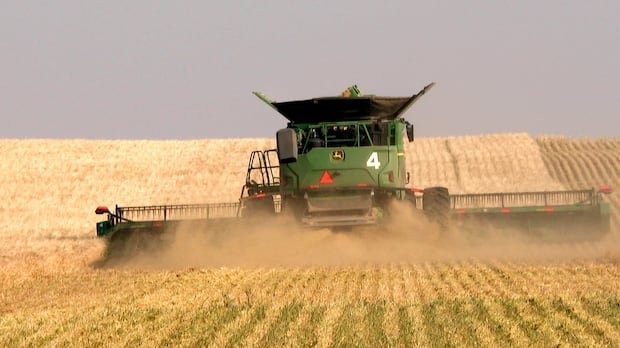Listen to this article
4 minutes estimated
The audio version of this article is generated using text-to-speech, a technology based on artificial intelligence.
Drought in some central regions of Alberta could force farmers and other members of rural communities to think twice about their water use.
Updates to Agriculture and Agri-Food Canada’s drought monitor have found large swaths of the province are extremely dry and some smaller areas are classified as exceptionally dry.
Agroclimate specialist Trevor Hadwen said that on a national scale, Canada has not seen drought conditions this severe since the early 2000s.
Some of the most extreme cases are concentrated in British Columbia, southern Ontario and the Maritimes. The Northwest Territories regions have also experienced an exceptionally dry fall.
Hadwen said he’s not too concerned about most of those regions making up for their moisture deficits during the winter months, but it’s a different story for the Alberta and British Columbia regions.

He said large portions of central Alberta received less than 40 per cent of normal precipitation in October. Some regions received as little as five millimeters of precipitation.
“Those conditions have led to loss of water supplies, low soil moisture and actually reductions in some of the lake levels,” Hadwen said.
He said he is especially concerned about conditions in the Peace River area, located about 500 kilometers northwest of Edmonton.
Hadwen said that area is experiencing exceptional drought conditions, which began in August.
“Dry soils during the fall will affect your pastures for the next year and all that,” he said. “But the real concern right now is the water supply.
“We need as much moisture as possible before it freezes in that region to try to replenish those water supplies both from a municipal standpoint and from an agricultural standpoint.”
Hadwen said if the Peace River region doesn’t receive enough rainfall before extreme cold hits the province, local officials may have to consider implementing water restrictions well into winter.
Dawson Creek, a city in British Columbia near the provincial border with Alberta, is also experiencing exceptional drought conditions this fall. The city last month declared a local state of emergency, which included water restrictions, as a result of the drought.
“What is in [the water systems] is basically what will be there for winter availability, as the snow has to melt before more moisture enters that system. Again, this is a pretty critical period,” Hadwen said.
Water restrictions and dry conditions could mean low crop yields next year for Andre Harpe, president of the Canadian Canola Growers Association.

He has been a farmer in Grande Prairie County for over 30 years. But this year has brought the worst drought conditions he says he has ever seen.
“If you start digging in the ground that’s when you really see how dry it is,” Harpe said. “Obviously, because we’ve had some rain and some snow, we’ve got a little bit of moisture at the top. But as soon as you start going down, it’s completely dry.
“I’m really worried about next year because… we can’t lose the crop before we’ve planted. At the same time, we’re going to need a significant amount of snow for moisture levels to recover in the soil.”
Harpe said he is already considering taking precautionary measures during the winter months, such as adjusting the amount of fertilizer he normally uses and being extremely cautious with the amount of water he uses.
He said neighboring farms and communities will be affected if water restrictions come into play, especially for ranchers, and many are preparing to proactively reduce their water use.
Harpe said there aren’t many other precautions they can take until they better understand what winter will be like.
“We thought last year was dry. And I didn’t think it could get any worse, but it did,” he said.
“This is unprecedented. So, you know, we really don’t know what’s going to happen next year.”
In early October, the Alberta government committed about $25 million in funding to improve infrastructure as part of its Drought and Flood Protection Program.
The province has also been working to increase water availability and improve the water management system in Alberta.








